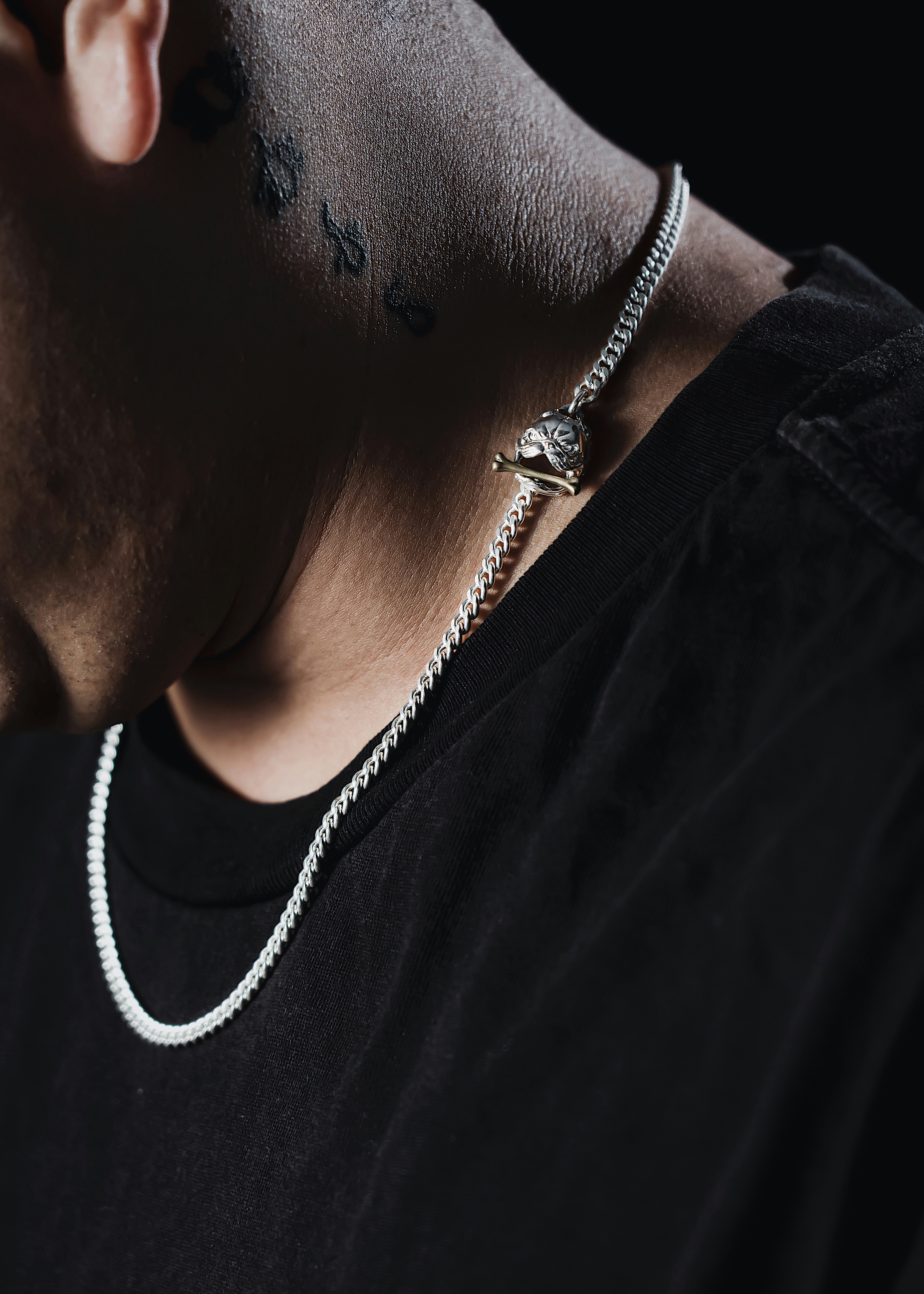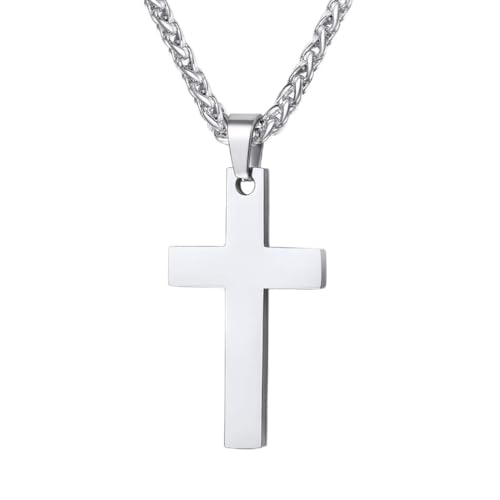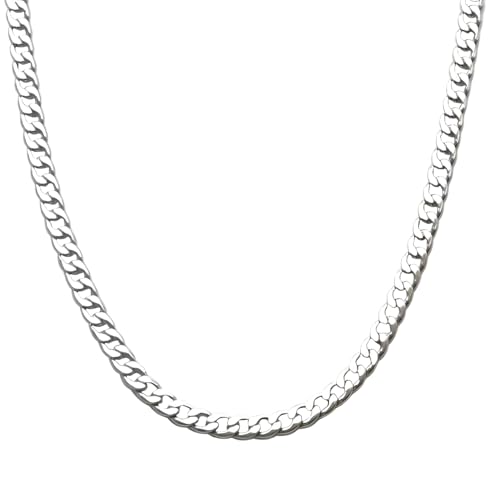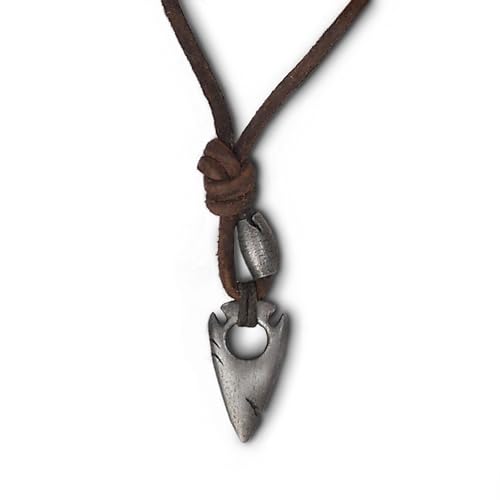Historical Origins of Necklaces for Men
The history of necklaces for men is a fascinating narrative that spans across various ancient civilizations, showcasing how these jewelry pieces transcended mere adornment to embody cultural significance. In ancient Egypt, for instance, necklaces were not only worn by males of high status but were also considered symbols of power and divine protection. Pharaohs and elite members of society donned elaborate gold necklaces adorned with precious stones, believed to provide favor from the gods. The intricate designs often embodied hieroglyphic symbols, reflecting the deep spiritual connections Egyptians had with their jewelry.
Similarly, in ancient Greece, men adorned themselves with simple yet elegant necklaces. These pieces were often crafted from materials such as leather or metal, showcasing artistic craftsmanship that emphasized their societal standing. Greek warriors, for example, wore necklaces that included amulets, which were believed to offer protection in battles, illustrating the fusion of functionality with aesthetic appeal. The cultural significance of men’s necklaces in Greece was also evident in the artistic representations seen in pottery and sculptures of the time.
Moreover, Native American cultures also embraced the use of necklaces, often made from natural materials like shells, beads, and stones. The necklaces held deep meanings, often representing tribal identity or spiritual beliefs. The different patterns and types of jewelry indicated the wearer’s status within the community and connection to their heritage. Over time, the use of jewelry evolved, with styles adapting to convey not just individual identity but collective cultural narratives.
As societies progressed, the materials and styles used in crafting necklaces for men reflected the technological advancements and trade interactions. The transition from natural artifacts to more refined precious metals and stones marked a significant evolution in jewelry design, further emphasizing the ongoing importance of necklaces as symbols of identity, status, and personal expression throughout history.
Cultural Significance Through the Ages
The cultural significance of men’s necklaces has undergone a profound transformation from historical times to the present day. In the Middle Ages, jewelry served as a potent symbol of status and power, particularly among the nobility. Men adorned themselves with intricate necklaces crafted from precious metals and stones, which were often used to signify wealth and authority. The designs were significant, as they reflected the wearer’s lineage and allegiance, with motifs that stood for protection, honor, and prestige.
As society progressed into the Renaissance, the adornment of men continued to evolve, showcasing a newfound appreciation for personal expression and artistry in jewelry. Necklaces became more ornate, with elaborate designs and a shift toward more colorful gemstones. This era allowed men to engage in fashion more openly, with necklaces often layered amidst a variety of clothing styles that paralleled their elevated social statuses. The blending of art and adornment emphasized individuality, encouraging men to embrace jewelry as an expression of their personalities.
The subsequent centuries saw fluctuating attitudes toward men’s jewelry, particularly necklaces, influenced heavily by societal norms and cultural shifts. For instance, during the late 19th and early 20th centuries, men’s adornment became less common, as it was associated with femininity. However, this perception began to shift in the latter half of the 20th century, as movements like punk and hip-hop emerged. Necklaces made a significant comeback, becoming symbols of rebellion and identity, with individuals utilizing jewelry as a means of social commentary.

Today, men’s necklaces are no longer confined to the realm of luxury or exclusivity; they embody a blend of personal style, cultural identity, and modern masculine expression. As societal norms continue to evolve, the acceptance of men wearing jewelry, particularly necklaces, signifies a broader cultural shift towards inclusivity and individualism. This evolution illustrates the powerful role adornments play in reflecting both personal identity and cultural narratives over time.
Current Trends in Men’s Necklaces
In recent years, men’s necklaces have witnessed a significant transformation, evolving from traditional adornments to essential statements of personal style. Modern men are increasingly adopting necklaces as a means of self-expression, allowing them to communicate their identity and individuality. As a result, a variety of trends have emerged, each reflecting diverse styles and preferences.
One prominent trend is the rise of minimalist designs. Many men are gravitating towards simple and understated pieces that embody elegance without being overtly ostentatious. These necklaces often feature thin chains with small pendants, making them versatile and easy to wear with various outfits, whether casual or formal. The appeal of minimalist jewelry lies in its ability to enhance a look without overwhelming it, allowing the wearer to express understated sophistication.
In contrast, statement pieces are gaining traction among those who prefer to make a bolder impression. Chunky chains, unique metal finishes, and vibrant colors define these standout accessories, offering an opportunity for men to showcase their personalities and tastes. Influencers and celebrities have played a pivotal role in popularizing these eye-catching styles, effectively encouraging men to experiment with larger, more daring options that prioritize visibility and artistry.
Additionally, personalized necklaces are becoming increasingly popular, enabling men to own pieces that hold special significance. Custom engravings, unique symbols, and meaningful charms facilitate individuality, allowing wearers to showcase their stories or commemorate significant events. This trend reflects a broader movement in men’s jewelry, emphasizing the emotional connection men have to their accessories.
As trends continue to evolve, it is evident that men’s necklaces are not solely about aesthetics. Instead, they represent a blend of fashion and personal narrative, encouraging men to find pieces that resonate with their identity. This cultural shift underscores the growing importance of jewelry in men’s fashion, allowing for deeper expressions of style and character.
Symbolism and Meaning in Today’s Society
In contemporary society, men’s necklaces have evolved beyond merely being decorative accessories; they now carry profound significance, embodying personal beliefs, individuality, and cultural heritage. These pieces of jewelry often serve as symbols that resonate deeply with the wearer’s identity and values. For many men, a necklace can represent milestones, relationships, or powerful messages of empowerment.
As societal norms evolve, the perception of men wearing jewelry, particularly necklaces, has shifted. No longer confined to traditional or conservative views, modern culture increasingly embraces the diversity of men’s fashion choices. This change allows men to express their identity more freely, using necklaces as an extension of their personality. Whether it is a simple pendant carrying spiritual meaning or an elaborate chain made from precious materials, each piece tells a story unique to the wearer.

Furthermore, necklaces can act as tangible reminders of heritage and values. Many men choose to wear symbols that reflect their cultural background or family history. For instance, some may opt for designs that honor their ancestral roots or convey messages related to their beliefs. In this context, jewelry is not just a fashion statement but also a connection to one’s past and an affirmation of one’s identity.
Additionally, men’s necklaces can symbolize expressions of masculinity that embrace both strength and sensitivity. The idea that jewelry is exclusively feminine is being challenged, leading to newfound appreciation for men’s jewelry as a means of authentic expression. As societal norms continue to evolve, men’s necklaces are playing an increasingly significant role in enabling men to communicate their narratives, beliefs, and individuality in a visually impactful way.
In conclusion, men’s necklaces in today’s society symbolize much more than aesthetic appeal. They represent a complex interplay of beliefs, heritage, and personal expression, marking a significant cultural shift in the way jewelry is perceived and worn by men.





